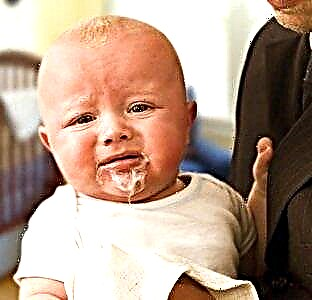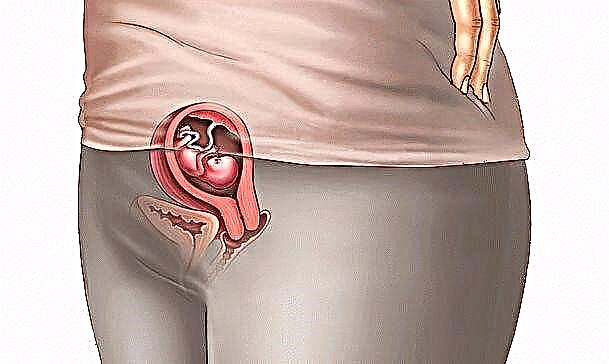The baby, while in the womb, feeds through the umbilical cord. After birth, he has to adapt to new environmental conditions. For this, nature rewards the child with reflexes, thanks to which he can eat, drink, and receive breast milk. But it happens that the baby spits up. It is necessary to figure out what is the reason for this condition and how to deal with it.
Why does the baby spit up breast milk?
“As a rule, babies are all prone to regurgitation. You need to be able to distinguish between normal regurgitation and pathology, ”says Dr. Komarovsky.
- physiology of the gastrointestinal tract... The stomach of a newborn resembles an open milk bottle, since the sphincter or valve, due to its immaturity, cannot completely close the exit from the esophagus into the stomach. As a result, milk can be thrown back into the esophagus, because the baby is in a horizontal position for more time until the age of six months;
- binge eating... The mother may have too much milk, and the child has not yet fully formed the saturation center in the brain, so the baby simply does not understand when to stop. As a result, the extra milk has nowhere to go.
In premature or immature babies, regurgitation is more common.
When is spitting up not the norm?
- the child continues to spit up after 6 - 7 months of life;
- lack of weight;
- spits up after each feeding;
- the baby spits up a lot.
Regurgitation and neurological disorders
Why does a baby spit up after breastfeeding with neurological diseases? It so happens that after birth, the baby suffers from increased intracranial pressure.
 This is indicated by the following signs:
This is indicated by the following signs:
- the parietal fontanelle is tense, large;
- changes in the fundus;
- an increase in the size of the head.
The cause of regurgitation in this pathology is constant irritation of the vomiting center of the brain. The baby often spits up after breastfeeding.
On the second day in the maternity hospital, neurosonography or ultrasound of the brain is always performed, where pathology is detected.
Pylorospasm and pyloric stenosis, or Why does the child spit up like a fountain?
Pylorospasm is a muscle contraction in the outlet of the stomach. The condition is assessed as pathological. This happens if the nervous system is not working properly or due to a lack of vitamins. Also accompanies children after difficult childbirth and prolonged oxygen starvation.
You should immediately consult a doctor if you notice the following states:
- the child spits up like a "fountain";
- the child spits up a lot;
- the baby often spits up;
- low weight gain;
- sleep disorders.
It is believed that a child vomits up heavily in more than two tablespoons. Frequent regurgitation - more than eight times a day.
Pyloric stenosis is a narrowing of the muscle part of the stomach in the outlet section. As a result, the contents cannot enter the intestines, and the baby spits up after each breastfeeding.
Physiological regurgitation
This is a condition due to anatomical and physiological characteristics.
Its characteristics:
- the baby spits up in small volumes;
- regurgitation does not occur after each breastfeeding;
- good weight gain;
- restful sleep.
What if the baby spits up?
Normally, children can spit up for up to six months until they start sitting.
 Always monitor the dynamics of your weight.
Always monitor the dynamics of your weight.
After each breastfeeding, the baby should be held upright or in a "column" for 10 - 15 minutes. When sucking, try to ensure that the baby correctly holds the nipple and does not swallow air, otherwise the stomach will fill with excess volume.
The correct feeding regimen is “breast on demand”, but you need to try to maintain the intervals between feedings, namely 2.5 - 3 hours.
It happens that breast milk is too fatty. This can be assessed by the nature of the regurgitated mass - it has a cheesy appearance, a vomit smell. In this situation, it is better to add water to the baby between feedings.
If the baby is bottle-fed, then it is necessary to reconsider the formula, which may not be suitable in its qualities.
When bottle feeding, pay attention to the hole in the nipple. It happens that it is too large, and the child does not have time to swallow the contents, chokes.
Pharmacies sell AVENT teat bottles. They are as close as possible in structure to the female nipple. The child makes an effort to eat himself, and nothing extra is poured out of it.
Anti-reflux mixtures to help mom and baby
Such mixtures should not be given daily, only 2-3 times a week. They contain a thickener - starch or gum, which allows the contents of the stomach not to pour out in the opposite direction. They are absolutely safe for newborns.
Well-known manufacturing companies:
- "Nutrilak" - antireflux, as an addition to the main mixture. Contains gum. Helps not only with regurgitation, but also in the fight against colic. Strengthens the immune system, has a beneficial effect on the intestinal microbiocenosis;
- "Nan", Nestlé also proved to be the best. The mixtures are made on the basis of starch. All antireflux mixtures can be given for up to a year.
If the composition contains gum, then it is better to give such a mixture once a week.
Regurgitation is a normal condition for children under six months. If parents are worried about the nature or frequency of regurgitation, it is necessary to inform the doctor!
Article rating:



